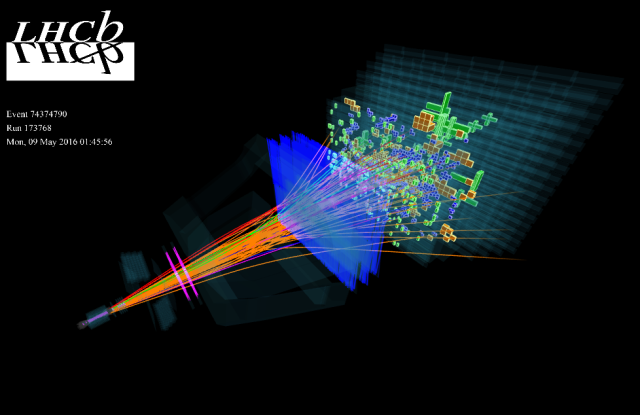If you are a quantum theory fanatic, then you have probably heard of the European Organization for Nuclear Research’s biggest lab, CERN. CERN is home to the world’s largest particle accelerator, the Large Hadron Collider (LHC), and other research facilities.
The LHC was first known worldwide in the Physics arena for the discovery of the Higgs Boson, also known as the ‘God Particle’, back in 2012. The Higgs boson is the particle responsible for giving matter its mass. Over the years, other discoveries have been made by scientists and engineers at the LHC among them the rebuttal theory against the existence of paranormal and the unveiling of new particles. This year the Large Hadron Collider Beauty (LHCb) Research Project has turned up some exciting discovery: the finding of five new quantum particles.
“Discovery of one quantum particle is big news, but the discovery of five new ones is astronomical,” said Dr. Greig Cowan, a member of the Beauty project research team.
To understand how the team came by its discovery, you need to understand how the LHC works. To begin with, the scientists will make two particle beams from opposite directions collide at high speed within the particle accelerator. Upon collision, the energy given off by the colliding beams will make the ordinary materials within proximity of the beams will melt into their comprising nanoparticles. Scientists conducting studies on the particles can then observe their nature by using the highly sensitive particle detectors of the LHC.
The five new particles the team uncovered are relayed to have been ‘hiding in plain sight’ according to another member of the research group, Professor Tara Shears who works at the University of Liverpool. All newly-uncovered five particles are high-energy omega-c particles, the team reported.
Omega-c particles are a type of baryon particle. The baryon sub-atomic particles derive their names from the Greek word for heavy because when they were discovered, they were speculated to be the heaviest quantum particles in existence. This theory is yet to be refuted. The most renowned of baryon particles are the protons and neutrons, which make up atoms as we know them. Each baryon particle, such as the ones discovered, is made up of three quarks.
Quarks are the fundamental building blocks of any form of matter. There are six kinds of quarks: the up, down, top, bottom, charm and strange quarks. The omega-c baryon particles that the LHCb project yielded consist of two ‘strange’ quarks and one ‘charm’ quark.
What these New Particles’ Discovery could mean for the Future of Quantum Theory
Quantum theory states that all matter in the universe is made of particles (quanta) that are linked together. The uncovering of these omega-c nanoparticles by the LHC is a step towards understanding how quarks bind to each other, Dr Cowan stated. “It could help us [physicists] understand baryons better, and even learn more about protons and neutrons.”
The discovery of the omega-c is also a positive step for physicists in understanding the binding in multi-quark particles.




